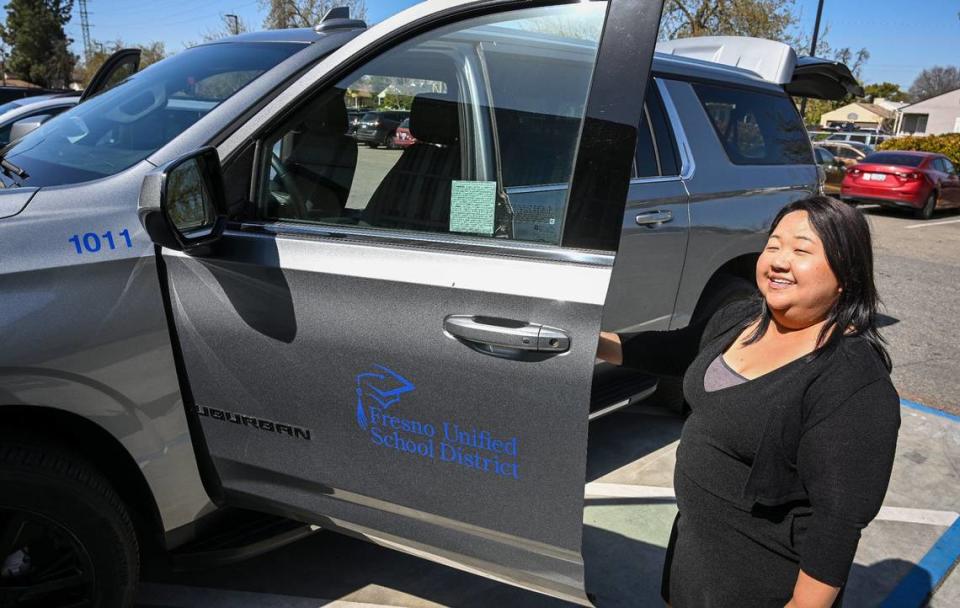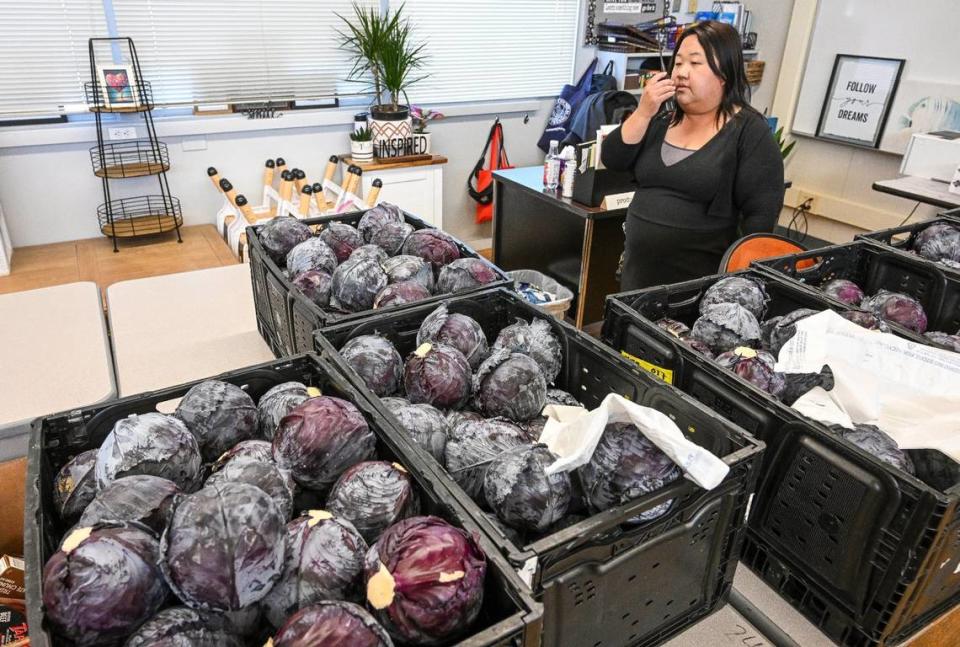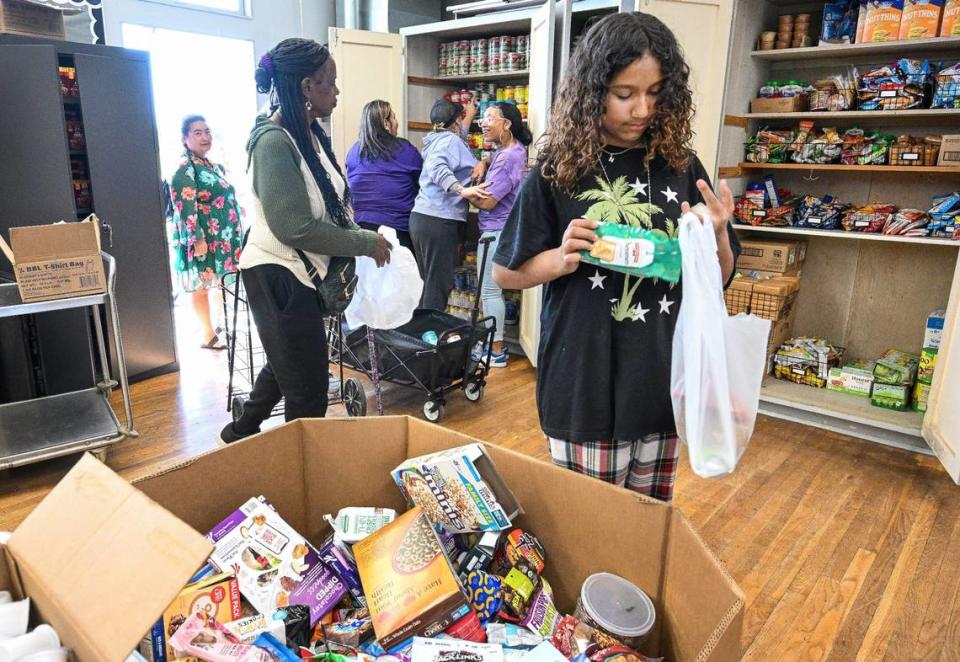Giving kids a ride to class increases attendance. Fresno schools succeeds with novel idea
When Beatriz Castro drives a van around the neighborhood to pick up students, parents recognize her. They call and text to let her know where they see children miss the school bus.
Castro is not a bus driver. She’s a liaison for Fort Miller Middle School, one of the five community schools that Fresno Unified School District set up last year with a $7.1 million grant from the state. Starting with a washer and dryer to assist students and families who couldn’t afford laundry, the program continued to explore the possibilities.
Now, it has a Chevrolet suburban vehicle to pick up students who are late for the school bus and send kids to attend off-campus activities; it runs a weekly food pantry to distribute produce and clothes; it brings in counselors and implements peer programs to support those who experience hardships; it holds family day and holiday events to engage parents and the community. All efforts are aimed at removing barriers for children to attend school and enjoy learning, and it is working.
“When I tell them about the car and the fact that there’s someone willing to pick them up, you could see the light on their faces by knowing that we care enough that we will drive literally to their front door, honk and give them a ride.” said Castro.

Fort Miller receives students from eight feeder elementary schools, said Principal Abraham Olivares. It could take two hours for some kids to walk to school, and they might need to walk through miles of canal routes, hazardous neighborhoods and cross the railroad tracks.
“These are kids that want to be at school, whether it’s because for social reasons, for food, for safety, they want to come to school, and they’re reaching out and saying they need a ride otherwise they wouldn’t have that opportunity,” said Castro. “So we get that alert.”
Fort Miller petitioned the school board and received the van in the fall semester. They developed a system to make the best use of it: Staff manage calls and texts from parents and students every morning, and direct the requests to the person who is on shift to drive the van. Because the vehicle has seven seats, it runs back and forth multiple times a day. Castro said sometimes students call her and say they have a group of three and start walking together. She would tell them to stop at a spot and the van would come to pick them up. It’s also common for kids in the car to recognize their peers walking on the way and ask her to stop and get those students on board.
The van has significantly decreased chronic absenteeism, Olivares told The Fresno Bee. This year, Fort Miller has increased average daily attendance by 1.7% so far compared to last school year. District wide, attendance also is better by 1.3%, as of February compared to last school year, according to the presentation in February’s school board workshop. Since the pandemic, the district and individual schools have been working to attract students back to the classroom.
To promote schooling, Fort Miller organized several meetings at the beginning of building the community school model to listen to families and community members and to identify the needs, one of which was food insecurity. So Fort Miller “begged” from vendors and organizations and turned a spare room at Fort Miller into a food pantry.

After months of outreach, the pantry is packed with food. The cabinets are filled with canned foods and cereals. Clothes hang on several racks in a corner, and there are large boxes with bagged food, produce, and drinks. Every Monday, volunteers come in to unload and stock up the storage bins, and when the food pantry operates on Fridays by noon, participants were already lined up outside the room for 30 minutes, said Xee Xiong, coordinator for the community school at Fort MIller.
“In a month, we serve about 2,000 families,” she added. “Imagine ten people walk around here and they are trying to look through their stuff, it’s all packed.”
During the week, the room serves as counseling space. Fort Miller uses a portion of the state funding to pay for a restorative practice counselor in response to families’ concerns about safety, school fights and other trauma.
The community schools program strives to become financially self-sufficient, said Eric Calderon-Phangrath, a teacher who has worked for years to find resources for students. The state program allocates approximately $280,000 annually to each site and the funding would last for five years, but the food pantry largely relies on donations from vendors and community partners, which reached 63 and keeps expanding, he said.
The resources and events are open to the entire community, said Olivares.
“We are building the relationship with our patrons, making sure we are reaching out to them and people are getting to know us better as a person, not just a teacher and staff, so they feel more comfortable and are able to come in more often,” said Olivares. “Those relationships really help support students, too.”
For the next steps, staff from Fort Miller said they are always looking for more donations and establishing partnerships with diverse groups, so that the school can host more events to engage students and offer various opportunities to prepare them for higher education and future careers. The school also hopes to expand the space for more facilities.

For Fresno Unified, it is looking to build 14 more community schools. The proposal is pending for the state grant but Trustee Andy Levine said the board is optimistic.
The grant decision should come in early May, with expansion beginning this fall, said the district in an email. The proposed 14 schools are Middle: Tehipite, Gaston, and Tioga; and Elementary: Jackson, Jefferson, Calwa, King, Lincoln, Columbia, Kirk, Addams, Robinson, Heaton, and Ayer.

